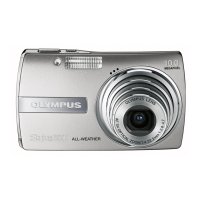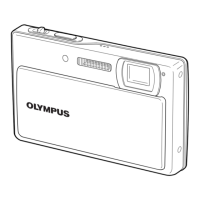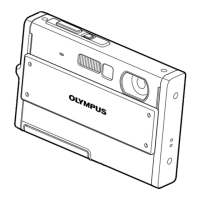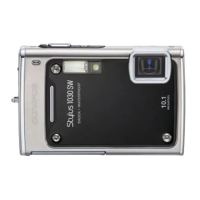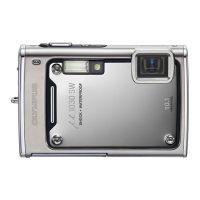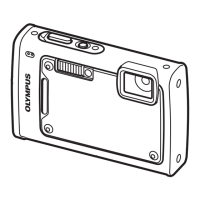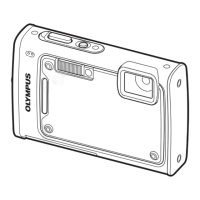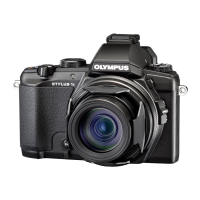Appendix
EN 67
• To protect the high-precision technology contained in this product, never leave the camera in the places
listed below, no matter if in use or storage:
• Places where temperatures and/or humidity are high or go through extreme changes. Direct sunlight,
beaches, locked cars, or near other heat sources (stove, radiator, etc.) or humidifiers.
• In sandy or dusty environments.
• Near flammable items or explosives.
• In wet places, such as bathrooms or in the rain. When using products with weatherproof designs, read
their manuals as well.
• In places prone to strong vibrations.
• Never drop the camera or subject it to severe shocks or vibrations.
• When mounted on a tripod, adjust the position of the camera with the tripod head. Do not twist the camera.
• Do not touch electric contacts on cameras.
• Do not leave the camera pointed directly at the sun. This may cause lens or shutter curtain damage, color
failure, ghosting on the CCD, or may possibly cause fires.
• Do not push or pull severely on the lens.
• Before storing the camera for a long period, remove the battery. Select a cool, dry location for storage to
prevent condensation or mold from forming inside the camera. After storage, test the camera by turning
it on and pressing the shutter release button to make sure that it is operating normally.
• Always observe the operating environment restrictions described in the camera’s manual.
• This camera uses a lithium ion battery specified by Olympus. Do not use any other type of battery. For
safe and proper use, read the battery’s instruction manual carefully before using it.
• If the battery’s terminals get wet or greasy, camera contact failure may result. Wipe the battery well with
a dry cloth before use.
• Always charge a battery when using it for the first time, or if it has not been used for a long period.
• When operating the camera with battery power at low temperatures, try to keep the camera and spare
battery as warm as possible. A battery that has run down at low temperatures may be restored after it is
warmed at room temperature.
• The number of pictures you can take may vary depending on the shooting conditions or battery.
• Before going on a long trip, and especially before traveling abroad, purchase extra batteries. A
recommended battery may be difficult to obtain while traveling.
• Please recycle batteries to help save our planet’s resources. When you throw away dead batteries, be
sure to cover their terminals and always observe local laws and regulations.
• Do not push the monitor forcibly; otherwise the image may become vague, resulting in a playback mode
failure or damage to the monitor.
• A strip of light may appear on the top/bottom of the monitor, but this is not a malfunction.
• When a subject is viewed diagonally in the camera, the edges may appear zigzagged on the monitor. This
is not a malfunction; it will be less noticeable in playback mode.
•
In places subject to low temperatures, the monitor may take a long time to turn on or its color may change
temporarily. When using the camera in extremely cold places, it is a good idea to occasionally place it in a warm
place. A monitor exhibiting poor performance due to low temperatures will recover in normal temperatures.
• The LCD used for the monitor is made with high-precision technology. However, black spots or bright
spots of light may appear constantly on the Monitor. Due to its characteristics or the angle at which you
are viewing the monitor, the spot may not be uniform in color and brightness. This is not a malfunction.
Caution for Usage Environment
Battery Handling Precautions
Monitor
d4344_4356_e_0000.book Page 67 Monday, December 17, 2007 9:13 AM

